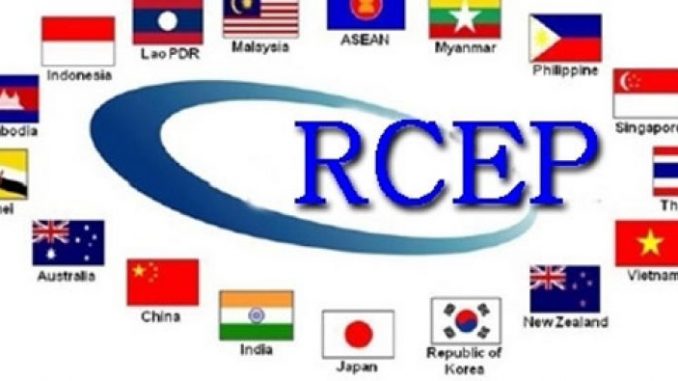
In News
RCEP has been signed by 15 countries.
In-Detail
- Without India, 15 countries signed their participation in the RCEP.
- India opted to stay out but the new trading block will remain open to India to return for negotiations.
What is RCEP?
- RCEP is a Regional Comprehensive Economic Partnership.
- At present, it is the largest regional trading agreement.
- RCEP has been negotiated between 16 countries which includes ASEAN members and countries with which they have free trade agreements (FTAs).
- The free trade agreement countries are China, Korea, Australia, Japan, New-Zealand and India.
- The main motive of this agreement is to make it easier for the products and services of these countries and to be available across this region.
- Since 2013, negotiations were made to chart out this deal and India was expected to be the main member.
Why Did India Walk Out?
- On November 4, 2019 India decided to exit the discussions on significant outstanding issues.
- The reason behind this, India has been consistently raising fundamental issues and concerns throughout the negotiations.
- They had not resolved by the deadline to commit to signing the deal.
- India decided to safeguard the industries like agriculture, dairy and the service sectors.
- The current structures of RCEP do not resolve these issues and concerns.
- One more reason is the presence of China.
- India was uncomfortable with its commitments under RCEP, as it has taken various measures to reduce its exposure to China.
- The unresolved issues during the RCEP were related to the exposure that India would have to China.
- There were inadequate protections against surges in imports.
- India will be unable to establish countermeasures to raise tariffs on products when their imports extended a certain threshold if it had joined the RCEP.
- India also wanted RCEP to exclude Most Favoured Nation (MFN) obligations from the investment and also extend benefits to the member countries for sensitive sectors like defence.
- RCEP lacked clear assurance on market access issues in countries like China and non-tariff barriers on Indian Companies.
Impact on India
- India’s decision would impact its bilateral ties with RCEP member nations.
- This will leave India with less scope to tap the large market that RCEP represents.
- The member countries may incline to focus on bolstering economic ties with the blocks.
- India’s decision could also impact the Australia-India-Japan network in the Indo-Pacific.
- It may halt the talks to promote a Supply Chain Resilience Initiative among the three countries.
- According to an assessment, the growth in trade, CAGR with the members for the past five financial years was only 7.1%.
- But there has been a growth rate in both imports and exports to these FTA partners.
- The utilization rate of FTAs with India was moderated with partners like Bhutan, Thailand, Afghanistan, Singapore, Sri Lanka, Japan, Nepal, Republic of Korea and Malaysia.
- With 11 of the 15 RCEP countries, India has trade deficits.
India’s Option
- India has the option of joining the agreement without having to wait 18 months as stipulated for new members.
- The possible alternative may be exploring its existing bilateral FTAs with RCEP members.
- India has agreements with ASEAN bloc, South Korea and Japan.
- India is negotiating with members like New Zealand and Australia.
- Some other agreements are the India-Singapore CECA, the India-Bhutan Agreement on Trade Commerce and Transit, the India-Nepal Treaty of Trade.
- India is negotiating bilateral agreements with the US and the EU.

Leave a Reply
You must be logged in to post a comment.